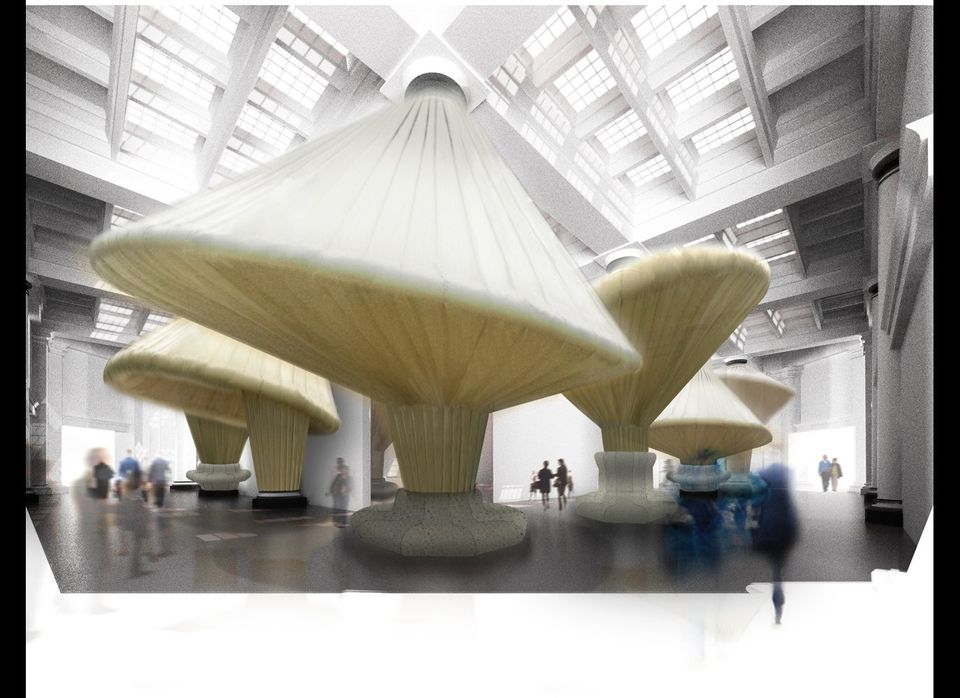Last week, Brooklyn Museum introduced reOrder: An Architectural Environment. The opening inaugurates the first phase of the Brooklyn Museum's renovation of its first-floor 10,000-square-foot colonnaded hall.
I had a chance to speak with Wes Rozen, of Situ Studio, the Brooklyn-based design and fabrication firm behind the new installation, which runs through January 15, 2012.
Where did the idea for reOrder originate?
We were asked to give a proposal for a site specific installation about a year ago. We quickly learned about the history of the Brooklyn Museum and its architecture. The building was designed by McKim, Mead & White at the end of the 19th century and it was going to be one of the largest art museums in the world at the time of its conception. Construction started just before World War I and to this day, it's only about a quarter of the original plan.
Given the opportunity to work in one of the museums largest halls, we wanted to play with the architecture. We saw these columns as a great feature of the museum, and we wanted to play with the architectural iconography of these columns. Transform the 10,000 sq ft space just by changing the shape of the columns The profile and bringing ornamentation and decoration back into the space.
Do the columns move?
No. Once they are built out, they are fixed. But the construction system allows for adjust-ability, so there's been a lot of movement during the installation process. We've been working in the museum for three weeks, and prior to that, we've been developing the project in our studio for seven months. We worked through half-scale mock ups, full-scale mock ups, models and going in and out of the computer. Our studio is evenly divided between fabrication and design, so we worked with CNC (computer numerical control) machines, and are able to quickly mass produce irregular shapes during our exploration process.
What are the plans for use of the space?
The shape of the columns are designed to be functional. At the base there are tables and benches and the columns are made from fabric that allow the daylight to shine through.
Playing with the scale of the room, the variety of shapes are meant to animate the space as one but also create a more intimate enclosure. The room will be a multi-use space. It will be up for a year, and the idea is to hold events and exhibits, as well as as a hub of the museum. It's been designed to have a minimum impact on the floor, so the flow of traffic is largely undisturbed.
Transforming the Great Hall from Situ Studio on Vimeo.
